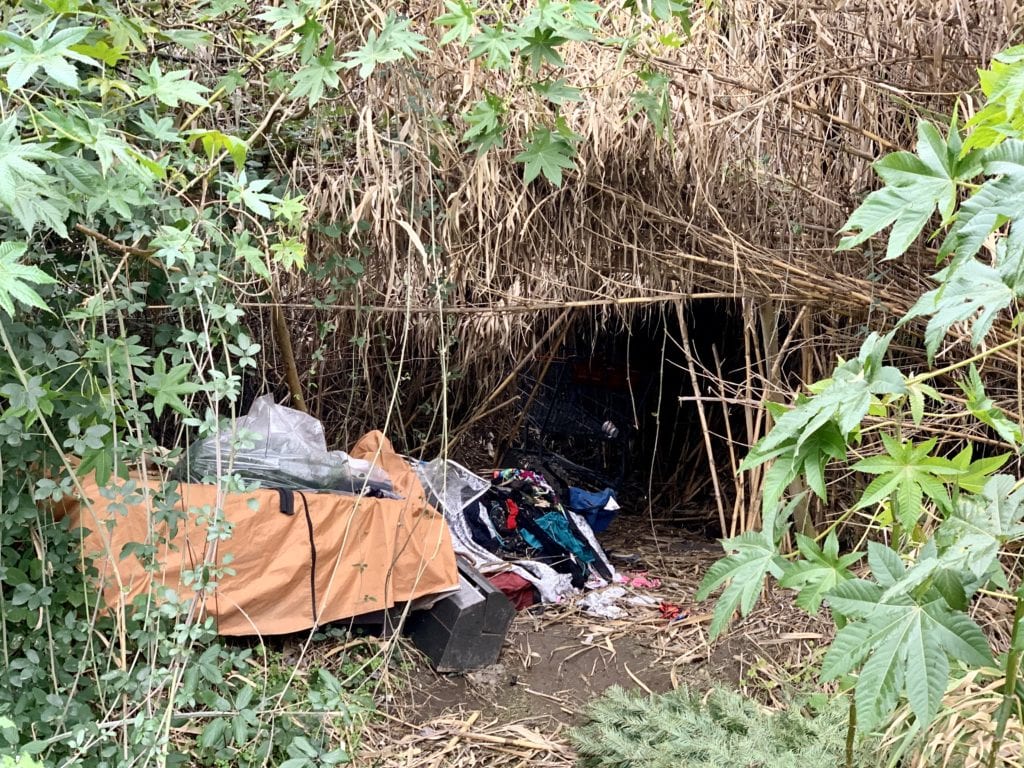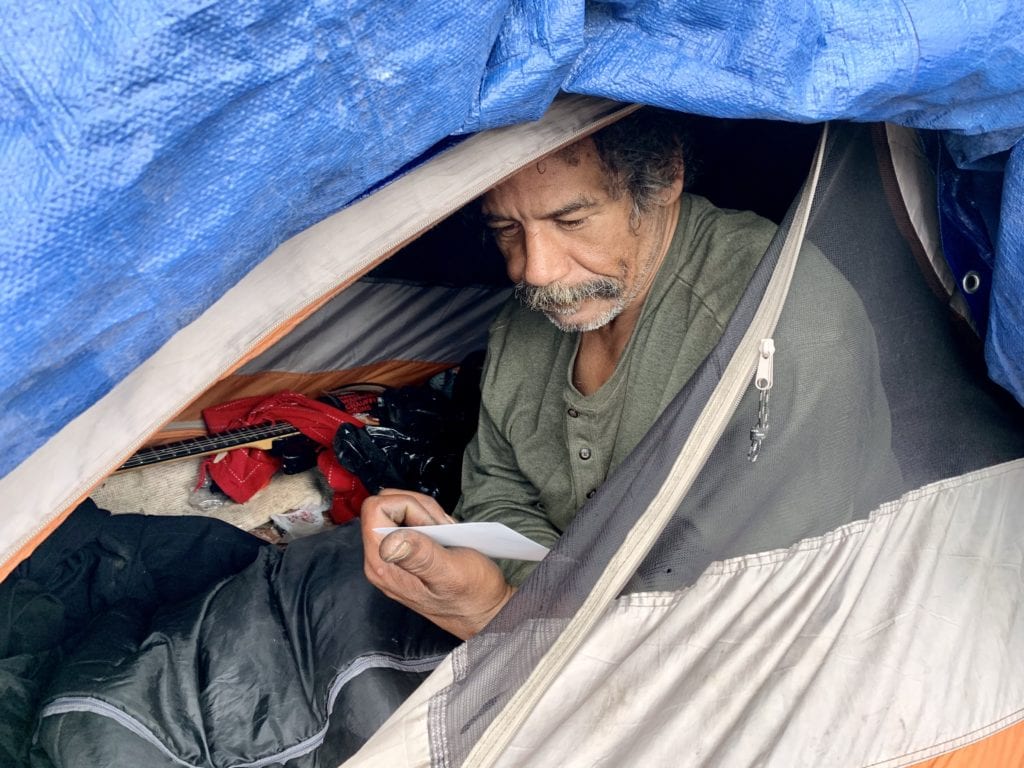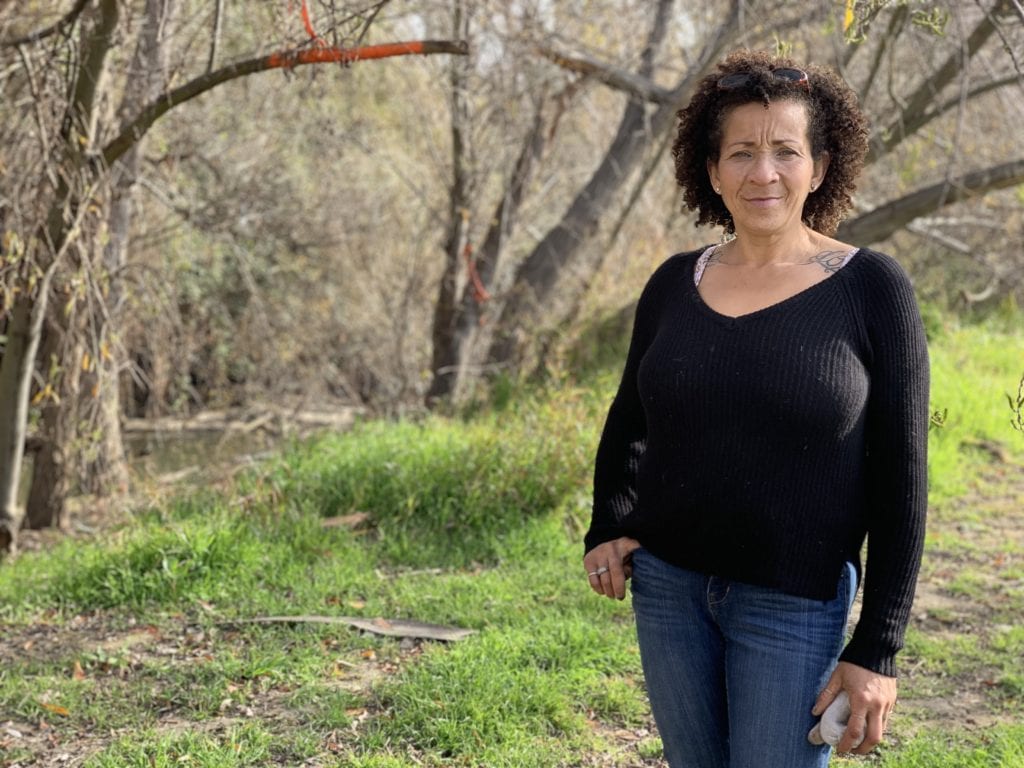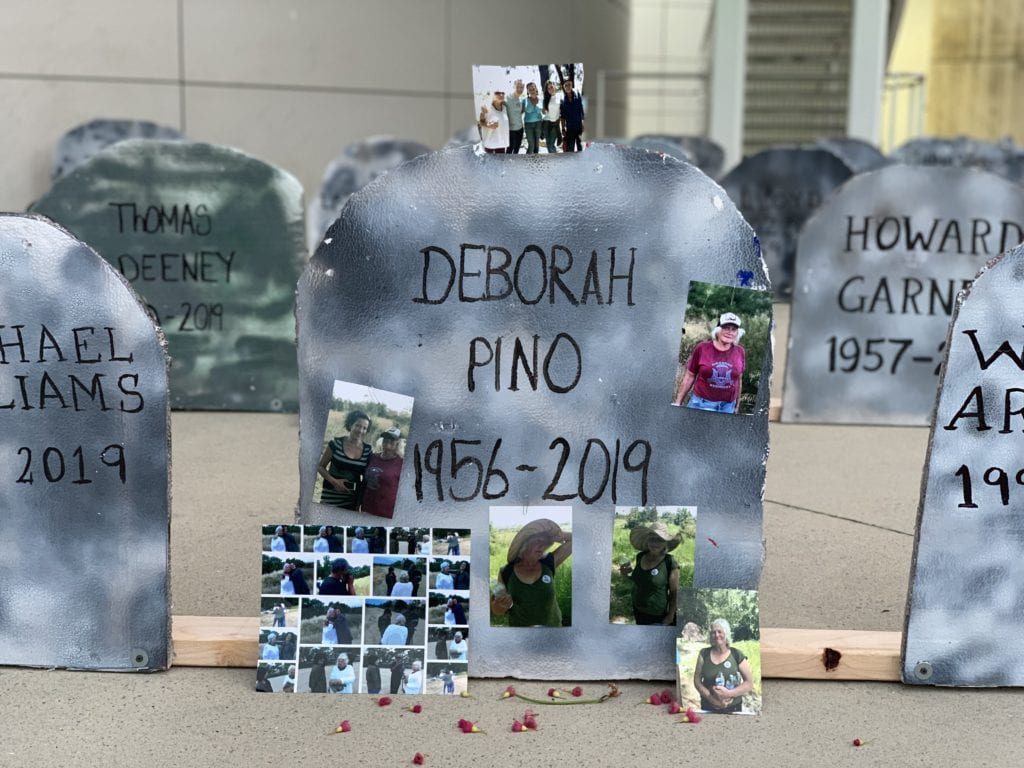To many, Deborah Pino remains a statistic: She’s one of the more than one hundred homeless deaths in Santa Clara County last year.
But Pino was more than homeless — she was a person who had hope. Despite living at “Jurassic Park,” a sprawling homeless encampment at Coyote Creek, she led her life with dignity that inspired those around her.
“Her kind spirit was felt throughout the camp and people looked up to her,” said Jamie Foberg, co-founder of In Their Shoes, a nonprofit that advocates for Silicon Valley’s homeless residents, from supply drives to legal advocacy. “She was one of the nicest people we’ve ever encountered while working in the encampments.”

Foberg started In Their Shoes with Sachin Radhakrishnan, a fellow downtown San Jose resident, because both advocates felt compelled to give back.
“I had someone close to me who had been homeless and it opened my eyes to the issue,” Radhakrishnan said. “And (Pino) died in a tent even though she came from the Rose Garden community not too far away. Her death could have been prevented.”
Pino died last October at age 63. The cause is believed to be drug-related, according to the Santa Clara County coroner’s office.
A ‘happy-go-lucky’ person
Tripper, a Jurassic Park resident, was Pino’s neighbor for six years, the two living in tents side by side. They quickly became best friends.
Tripper said Pino was raised in New Jersey and moved to California to be with her parents as her kids were growing up. She lived a normal life raising children and grandchildren — until financial hardship and homelessness hit her in her 50s.
Despite hardship landing her on the cold streets of Silicon Valley, Pino was a “happy-go-lucky” person, Tripper said, and she loved two things — her cats and nature.

“If you notice that this side of the creek has a lot less garbage, her addiction was picking up garbage and cleaning up,” he said. “We’d have major storms, and we would dig garbage out of the trees — both of us saving the environment.”
Pino’s warm presence, combined with the fact that she was older than most people in the encampment, earned her the nickname of “Mama Deb,” Tripper said. “She did a lot of feeding people,” he added. “She liked to make sure people weren’t hungry.”
But even an optimistic soul like Pino’s wavered in the face of homelessness.
Tripper said Pino was surrounded by “stuff she didn’t want” — fighting, stealing, drugs. She dealt with manic-depressive disorder, Tripper said, and would wake up some mornings screaming.
“Being homeless killed her,” Tripper continued. “She wasn’t regulated on her medication. She wasn’t taking it all the time. She had really bad high blood pressure.”
Tripper left town to visit a friend in December. And when he came back, his best friend was gone.
“I wasn’t there,” Tripper said. “I’m working on a grave for her right now, here.”
Stacey, another friend who declined to provide a last name, has been homeless for the past five years, having been displaced after living in Merced County for 24 years. Stacey ended up moving into Jurassic Park, near Pino.

“Me and Debbie were very, very close,” Stacey said. “I miss Deb a lot; I could talk about her right now and start crying. It was like, ‘Poof!’ and she was gone.”
Pino was unique in so many ways, Stacey recalled, from her outlook to her fashion choices. She liked to wear oversized hats, oversized shoes and oversized coats. A few weeks before Pino’s death, the two spent an evening at Stacey’s tent watching a romantic drama, their version of a girl’s night.
Following Pino’s death, her family hosted a small gathering at the Municipal Rose Garden. According to Stacey, she had loved the nearby Rosicrucian Egyptian Museum.
“I wore the biggest hat I could find,” Stacey said.
The aftermath
The number of homeless deaths in Santa Clara County has risen in recent years, reaching a record high of 161 in 2019. Homeless deaths were reported as 138 in 2018, 157 people in 2017 and 132 people died on the streets in 2016.
And as a San José Spotlight report found last year, county officials do not have an estimated count for suicide deaths among homeless residents for the last two years and have no clear procedures for determining whether a homeless death was intentional.

Pino’s death was a loss to the tight-knit Jurassic Park community, and by telling her story her friends hope to humanize homelessness in one of the wealthiest regions in the world — and to remind residents that every homeless person has a story, a face, a name and a family who loved them.
The hope is to create a shelter solely for the Jurassic Park residents, Radhakrishnan said, and In Their Shoes is currently in the planning and fundraising process.
Solutions to prevent homeless deaths in Silicon Valley appear to be scarce. While San Jose officials and nonprofits have teamed up to provide warming shelters in the winter, Santa Clara County leaders met last month to finalize a five-year plan and framework that aims to house all county residents by 2025.
The county’s Board of Supervisors also created a new task force to alleviate homelessness earlier this year.
“Focusing on transitional housing and temporary shelter is long overdue,” Supervisor Dave Cortese said. “Today, we have called for the administration to return to the board with strategies to turn these ideas, many of which came directly from Summit discussions, into action.”
These steps are too little too late for Pino. While her death was not unique — a homeless woman who died outside — the person she was when she was alive and the example she set encouraged the people around her to do the same.
“She tried to do what she could possibly do — she really, really tried,” Tripper said. “Deb had the biggest heart on earth.”
Contact Loan-Anh Pham at [email protected] or follow @theLoanAnhLede on Twitter.



Leave a Reply
You must be logged in to post a comment.